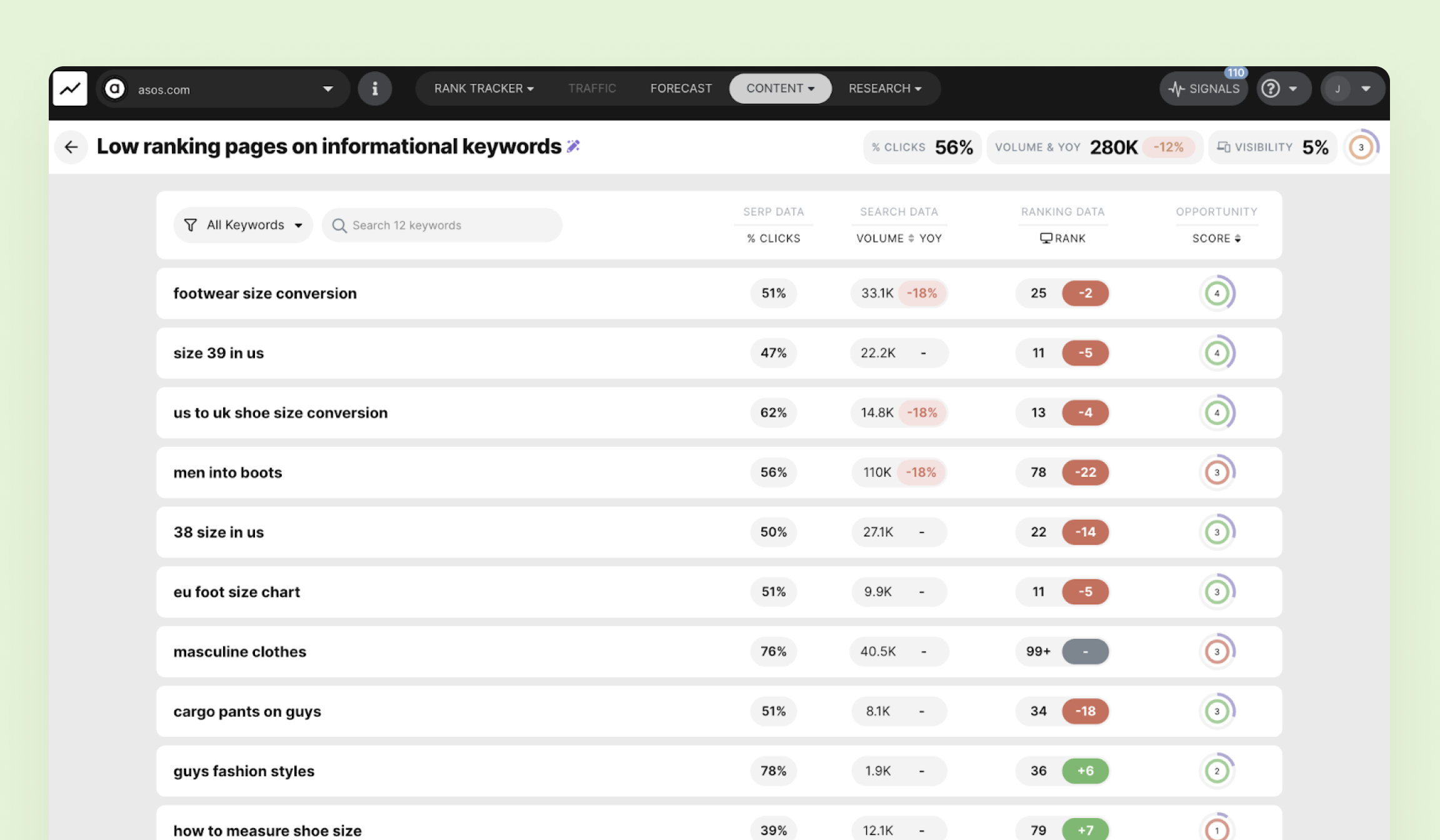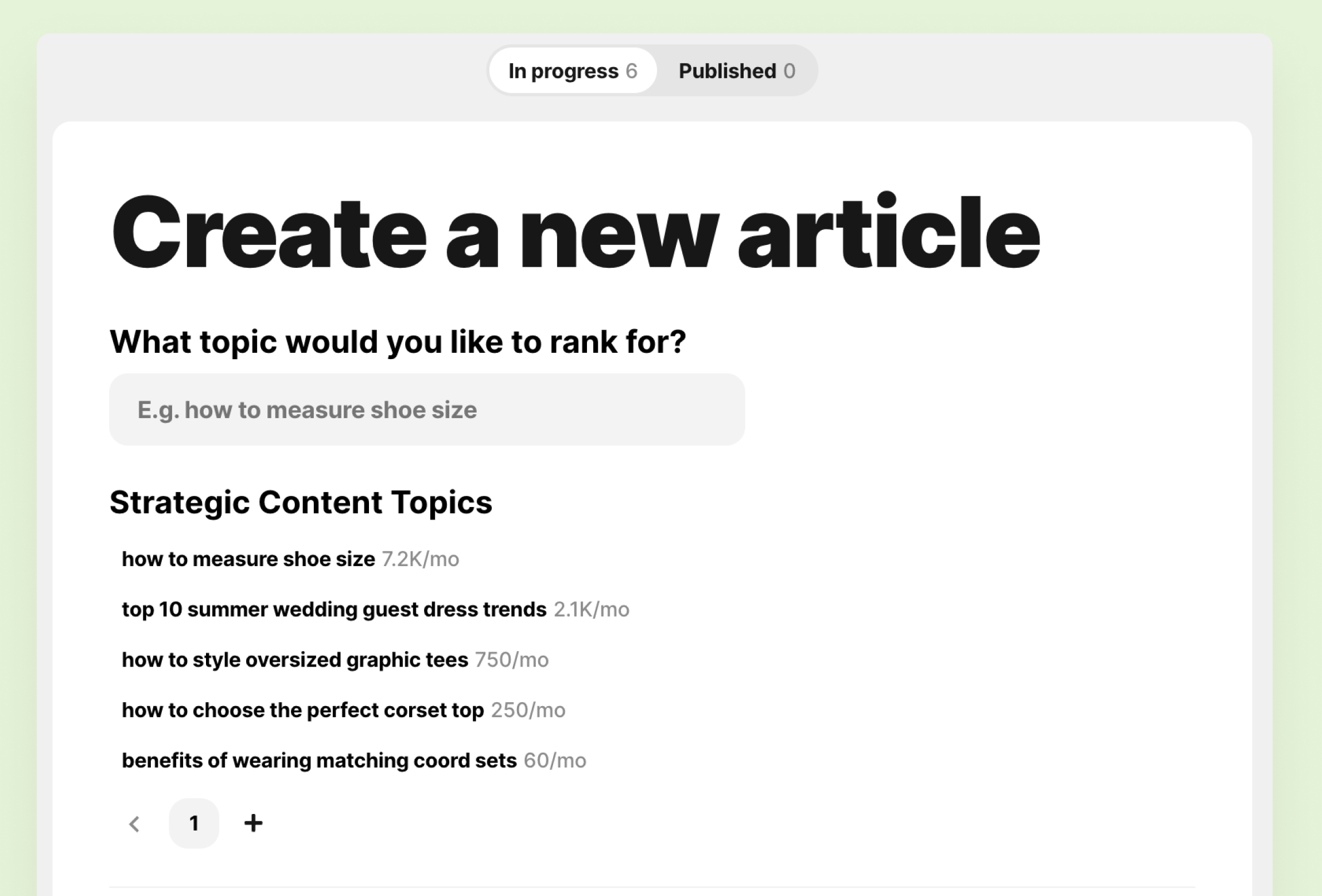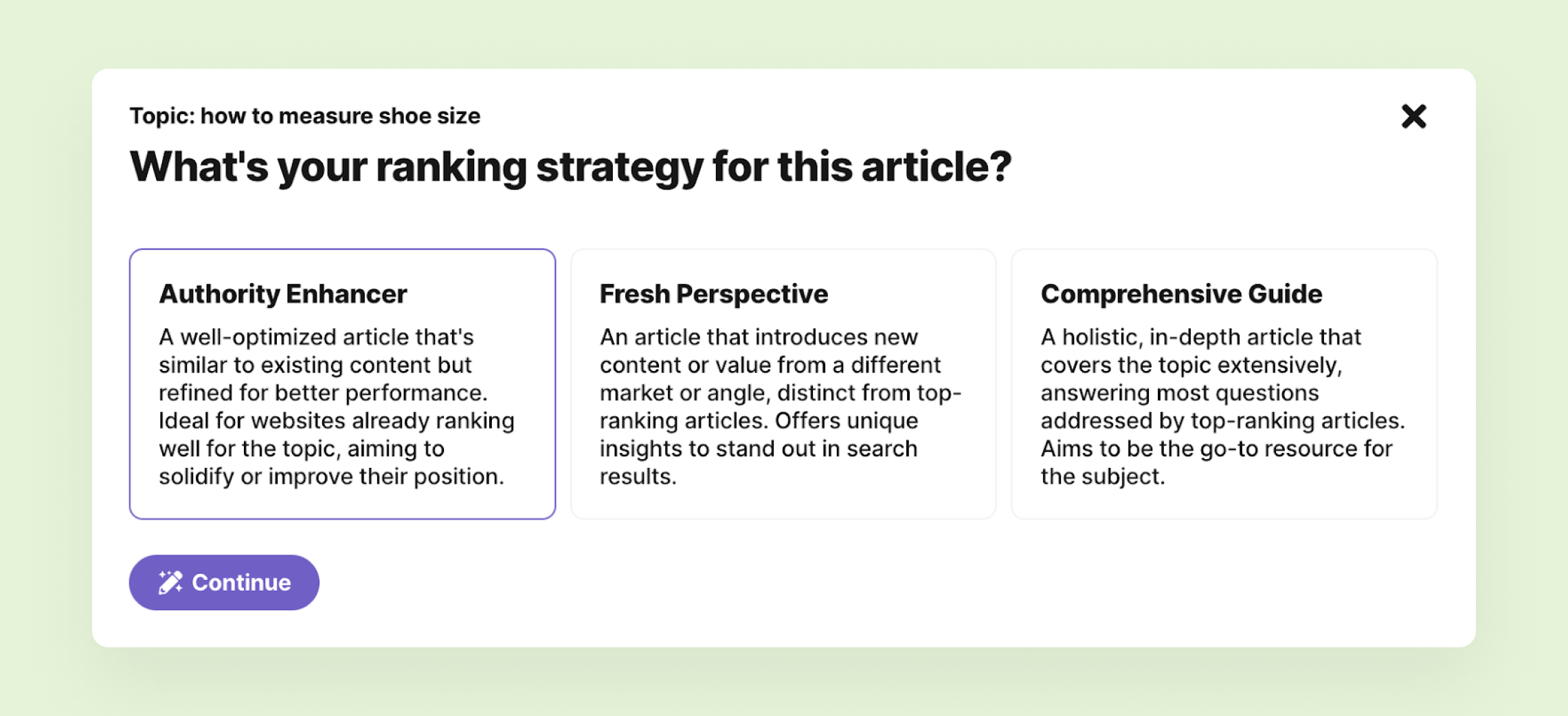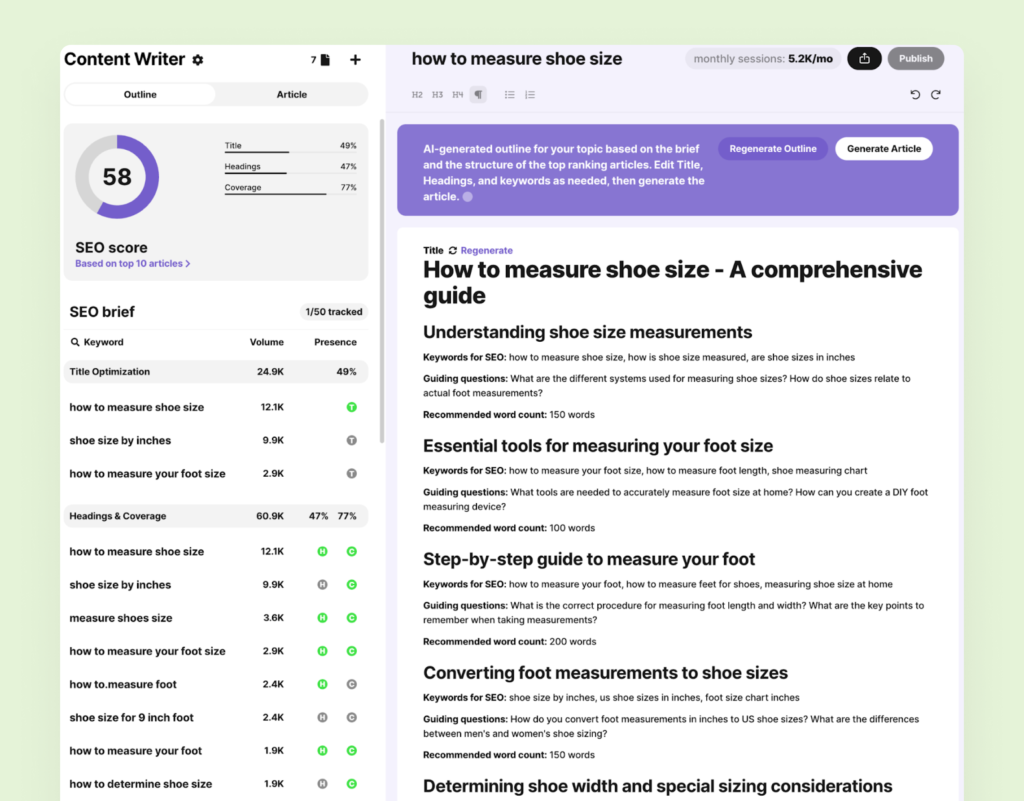A content brief is an indispensable strategic document that guides writers and content creators in producing SEO-optimized content.
We’re about to talk through what makes a great content brief, things to take into consideration and common challenges, but if all you want is a new template to work from – it’s right here. If you’re keen to then edit that seo content brief template, or want to create your own from scratch, then read on as we describe what makes the perfect content brief.
It’s unsurprising to say that a great content brief contains key elements such as target keywords, audience information, and specific requirements to align content with overall SEO goals for clients. Getting your content brief template right, however:
SEO content briefs are both more important and complex than a traditional writer’s brief because they pass over key data-driven insights such as user intent and frequently asked questions. By providing insights into what users are looking for when they enter specific search queries, briefs help writers create content that satisfies both user needs and search engine requirements, in a way that would otherwise be non-obvious to most content writers.
For larger pieces, content briefs speed up the creation of comprehensive, authoritative content by outlining key topics, subtopics, and questions that would otherwise require the writer to do their own research, whilst avoiding the dreaded blank page. This level of detail and structure helps content rank better in search results and positions the agency’s clients as trusted sources of information in their respective niches, building authority over time.
Then, of course, there’s the important issue of scaling and standard agency processes. Content briefs allow SEO agencies to maintain quality and consistency while increasing content output, ensuring that each piece aligns with the client’s brand standards and contributes to overall SEO performance across diverse industries and markets. So, it’s pretty clear that good content requires good briefing – but what goes into a great content brief?
To create high-performing content consistently for clients, SEO agencies should include the following key elements in their content brief templates:
Clearly state how the content piece fits into the client’s overall SEO strategy. This helps writers understand the broader context and ensures that each piece contributes to long-term SEO goals, such as building topical authority or targeting specific stages of the buyer’s journey.
Include an audience persona section covering:
This doesn’t need to be War and Piece – you’re providing a vignette into the audience reading the article so that the copywriter can draft appropriately, you’re not setting a multi-million pound ad-spend.
Provide a thorough analysis of search intent, including the primary search intents for target keywords, examples of how top-ranking content in the client’s industry addresses these intents and specific user questions the content should answer based on “People Also Ask” features and keyword research tools
Include a section on competitor analysis that identifies top-ranking competitors for target keywords in the client’s niche as well as any notes of what you like on those sites.
Provide a clear outline for the content structure, including:
Include specific technical SEO elements such as:
Clearly define what success looks like for the content piece by specifying:
Ensure consistency in tone and style by including:
By incorporating these elements into your SEO content brief template, you create a comprehensive guide that empowers writers to produce high-quality, SEO-optimized content consistently without taking away their ability to be creative. This level of detail actually makes content creation faster, not slower, by allowing more pieces to be approved on their first draft. That means better rankings, increased organic traffic, and improved ROI on content marketing efforts.
So far we’ve talked through how to create a killer SEO content brief, but that doesn’t mean it works well for you and your team. Getting it ready for your agency’s about a lot more than slapping a logo on it. To create a customized SEO content brief template that speaks to your agency’s unique needs and client requirements, consider the following strategies:
Consider having a per-client template to reflect their internal workflows and approval processes. Incorporate client-specific requirements or industry regulations that may affect content creation. For particularly complex sign-off processes (e.g. pharma) potentially include workflow’s making clear who the document needs to go to at every stage so it doesn’t get lost along the way.
You’ll likely want to modify the type of data that you’re putting into the brief based on the SEO tools that you use. For example, if you pay for something like Sparktoro, you might want to beef up the section on audience behaviour. Meanwhile, if you’ve a rank tracker that doesn’t give you information about search intent, SERP features etc then, apart from getting another rank tracker, you’ll likely want to remove those sections.
If you’re using briefs to have clients sign off on the very idea of creating certain pages then you’ll want to lean on some of your existing data to better understand why you’ve chosen this page, in particular, to create. This could include:
We talked about having customised templates for each client, but you’ll likely also need a different template based on the page type. For example, a brief for a category page should be much simpler than one for longform content. Do not spend 500 words explaining the 200 words you want written!
Of course, if you’re creating a lot of content briefs, then automation is always an option. When automating the creation of your content briefs, though, it’s important to keep sight of the fact that each content brief is, in real terms, a work order for a content writer. As a result, producing 100 content briefs could quite quickly back up all of your content writers for quite a while whilst wracking up a bill for your agency. So automation needs to come with a good prioritisation system.
In SEOmonitor we highlight the pages that could benefit from re-writing within the content audit section:

This is in addition to our ‘keywords with missing pages’ section, that suggests new pages that could be created – all prioritised by the size of the opportunity.
Within the Content Writer section we also do the keyword research for you to understand that an article on ‘how to measure shoe sizes’, for example, could achieve up to 7.2k visits a month:

From there it’s a click to decide the type of article you want:

…and then, within 5 minutes, you’ll have a content brief (with keyword justifications) ready to go. In the background it’ll have analysed semantically connected keywords, the content on the top 10 results for those keywords and a range of other factors to understand what the article needs not only to match user intent, but to rank.

While automation is objectively pretty cool, it’s essential to maintain a balance:
AI is a tool to support human decision-making, not replace it entirely. The most successful content strategies will leverage AI capabilities while still relying on human creativity, industry expertise, and strategic vision to create content that truly resonates with audiences and achieves client objectives.
If nobody uses your template, do you really have a template at all? Ensuring successful implementation of your template across your agency is as, if not more, important than the strength of your template in the first place. In the past I’ve had FAQs on Notion explaining how to use the templates. As new questions were asked about those templates I’d add the questions and answers to the FAQ.
By investing time in creating a customized SEO content brief template, you’re building a strategic asset that can significantly enhance your agency’s content creation process and SEO performance for clients. Remember to regularly refine and evolve your template based on insights gathered from its use and changes in the SEO landscape.
The Content Guidelines to Go With Your Content Brief
Find yourself wanting to write a few pages about tone of voice etc? What you’re writing is a Content Guideline document, not a brief. The good news is that these can be appended to the end of a brief.
In your Content Guidelines document you’ll want to consider adding information on:
Explain what each of these are, why they’re important and include guidelines on the kind of things that writers might want to include to excel at these; like quotes, reference to real-world trust signals like awards and links to government sites.
In your brief you may refer to requiring content in a particular style to target a SERP feature. In your Content Guidelines you’ll likely want to provide good examples of how those lists get used by Google and tips on creating them.
Guide writers on creating a logical content flow that keeps users engaged with the client’s website, reducing bounce rates. Your best writers will find it slightly patronising, though your west will likely benefit from it a great deal. Let the writers know if there are any interactive widgets at their disposal – such as calculators for financial clients – that they can include within the articles.
I always insisted that the client add in their own words how they saw their brand, their tone of voice and any other details that they felt were pertinent. If it’s not in the Content Guidelines then they shouldn’t expect the content writer to know or get it right. This gave the client ownership over the document and allowed everyone to point to it in the unlikely event that an article had major issues.
Ensure content is accessible to all segments of the client’s audience:
Unfortunately there are some challenges with content briefs that will forever be subjective. Here are some of the issues that you, as a team, will simply need to agree:
Challenge: Providing enough guidance without stifling creativity across various industries.
Solution: Strike a balance by:
Challenge: Including all necessary information without overwhelming writers, especially for complex industries.
Solution:
Challenge: Ensuring content meets both search engine and user needs across different sectors.
Solution:
Challenge: Keeping briefs up-to-date with evolving SEO best practices across various industries.
Solution:
Challenge: Maintaining a consistent brand voice and quality standard across diverse client portfolios.
Solution:
Challenge: Creating detailed briefs efficiently for large content volumes across multiple clients.
Solution:
Remember – as with everything in agency life this is not a solve-once problem. Mark out some time to regularly evaluate and adjust the approach based on client feedback and changes.
Ultimately, the goal is to create a content brief process that’s both scalable and adaptable, capable of guiding your content strategy across various industries.
To get you started, we’ve prepared a content brief you can steal, edit and call your own. Feel free to download it here.
Additional Resources
For more insights on creating effective SEO proposals and strategies, check out our comprehensive guide on crafting winning SEO proposals. This guide provides expert tips and strategies to elevate your agency’s success in securing and delivering high-impact SEO projects.